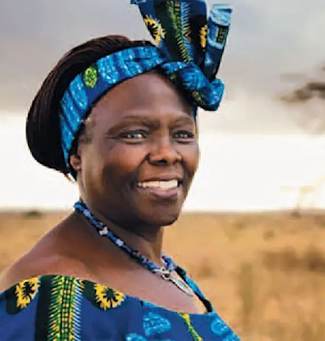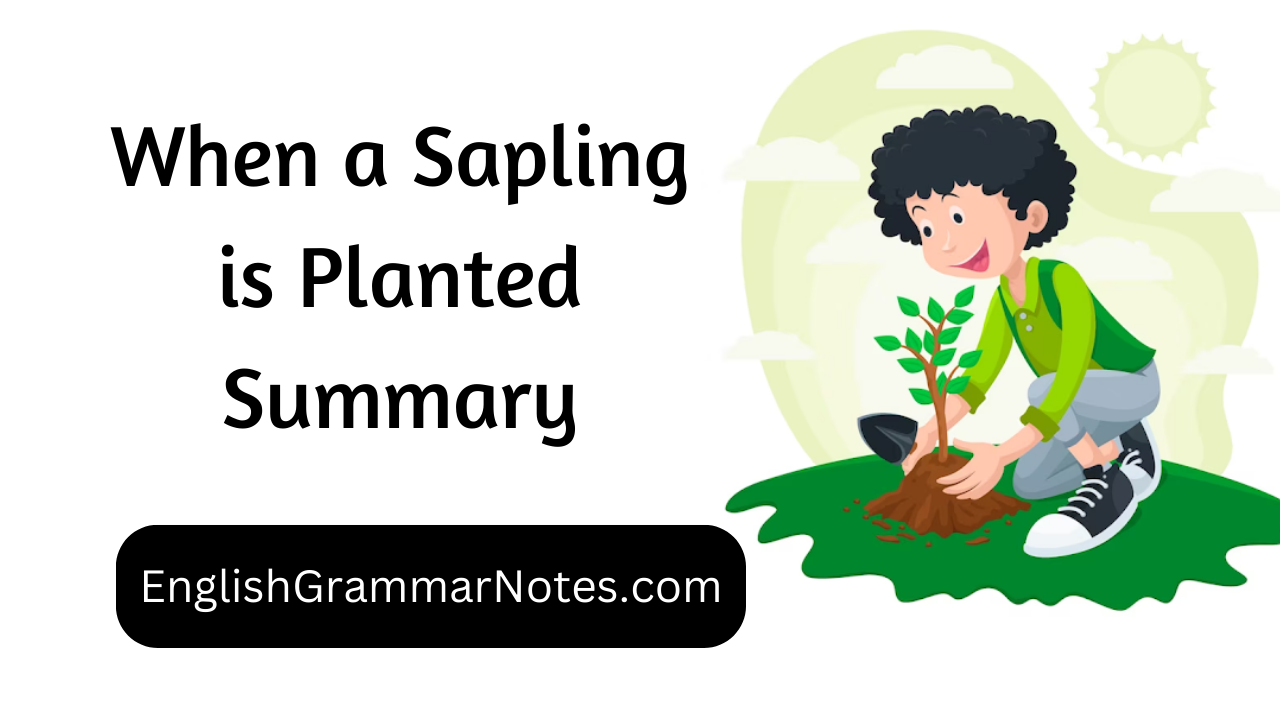“When a Sapling is Planted” is a heartwarming children’s book that explores the journey of a young sapling as it grows into a mighty tree, highlighting the significance of nature, growth, and stewardship. When a Sapling is Planted Summary through colorful illustrations and engaging storytelling, it imparts valuable lessons about environmental responsibility and the beauty of the natural world. Read More Class 12 English Summaries.
When a Sapling is Planted About The Author
Wangari Maathai is a Kenyan. She is an environmental and political activist. In the 1970’s she founded the Green Belt Movement. It is an environmental NGO, focussing on the planting of trees, conservation and women’s rights. She got the Nobel Prize in 2004 for her contribution to sustainable development, democracy and peace. This speech was made on 10 December, 2004 at Oslo.

– Wangari Maathai
When a Sapling is Planted Summary
Page 108: Your Majesties, your Royal Highnesses, Honourable Members of the Norwegian Nobel Committee, Excellencies, ladies and gentlemen,
I am the first African woman to receive this Prize. I accept it on behalf of the people of Kenya, and Africa and the world. I am especially concerned with women and the girl child. I hope it will encourage them to raise their voices and become leaders.
My inspiration comes from my childhood experiences and observations of nature in rural Kenya. As I was growing up, I noticed that forests were cleared and were replaced by commercial plantations. This destroys the local bio¬diversity and the ability of the forests to conserve water.
In 1977 we started the Green Belt Movement. I was then responding to the needs of rural women. They lacked firewood, clean drinking water, balanced diets, shelter and income.
Page 109: In Africa women are the primary caretakers. They till the land and feed their families. As a result they are the first to notice the environmental damage as resources become scarce, making it difficult for them to maintain their families.
It was becoming difficult for women to meet their basic needs. This was because of the degradation of their immediate environment and the introduction of commercial farming, replacing the growing of household crops. International traders controlled the prices of the produce by farmers and so they could not get a reasonable and just income. When the environment is destroyed, plundered and mismanaged, we undermine the quality of our life and that of the future generations.
Tree planting became a natural choice to satisfy the basic needs of women. Tree planting is simple. It guarantees quick and successful results in a reasonable amount of time. It sustains interest and commitment.
We have planted 30 million trees which provided fuel, food, shelter and income, which helps in children’s education and household needs. The activity creates employment and improves soil and watersheds.
Initially the work was difficult. The people were unaware that a degraded environment leads to a fight for scarce resources. It leads to poverty and conflict. They also did not know the injustice of international economic arrangements. Later they came to know the widespread destruction of the ecosystems, mainly through deforestation, climatic instability and contamination of the soil and water. All these led to extreme poverty and riots.
At the early stage, the Green Belt Movement did not concern itself with issues like democracy and peace. Soon it became clear that only a democratic set-up can implement schemes for responsible governance of the environment. Thus the tree became a symbol for democratic struggle in Kenya. Citizens were mobilized to challenge widespread abuse of power, corruption and environmental mismanagement.
Page 110: Soon the tree also became a symbol of peace and conflict resolution, especially during ethnic conflicts. Using trees as a symbol of peace is in keeping with a popular African tradition. The elders of Kikuyu carried a staff from the thigi tree. When they placed this staff between two disputing sides, they stopped fighting and sought reconciliation. Such practices are part of cultural heritage. They contribute to conserve habitats and peace.
It is now 30 years since we started this work. Activities that destroy the environment and societies continue. We have to have a shift in our thinking so that humanity stops threatening its life-support system. We are called to assist the Earth to heal her wounds, and heal our own. We have to embrace the whole creation in all its diversity, beauty and wonder. This will happen only if we see ourselves as members of a large family, which has shared our evolutionary process.
There can be no peace without equitable development. There can be no development without sustainable management of the environment in a democratic and peaceful condition.
In the course of history, humanity has to often shift to a new level of understanding, to reach a higher moral ground. We have to remove our fears and give hope to each other. Time for that has come.
I call on world leaders to expand democratic spaces and build fair and just societies. Then only the creativity and energy of the citizens will flourish. I call upon the young people to work hard to achieve their long-term dreams. They have the energy and creativity to shape a sustainable future. The young people are the gift to their communities and the world. They are our hope and our future.
Page 111: As I conclude, I think of my childhood. I would visit a stream next to our home to fetch water for my mother. I would drink water straight from the stream. Playing among the arrowroot leaves, I tried, without success, to pick strands of frogs’ eggs, thinking that they were beads. But every time I touched them they broke. Later, I saw thousands of tadpoles, black, energetic and wriggling through the Clear water against the background of the brown earth. This is the world I inherited from my parents.
But now the stream has dried up. Women walk long distances for water which is not even clean. Children will never know what they have lost. The challenge is to restore the home of the tadpoles and give back to our children a world of beauty and wonder.
Conclusion:
In conclusion, when a sapling is planted summary pdf of planting a sapling goes some distance past the simple act of setting a young tree into the floor. It represents a promise to the destiny, a commitment to nurturing life, and a reputation of our duty as stewards of the planet. As that sapling takes root and starts off evolved to develop, it turns into a image of hope, resilience, and the ability for superb exchange. The blessings it offers, from purifying the air to imparting colour and habitat for wildlife, are precious.
